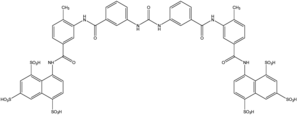Painful oral lesions are seen in almost all patients with pemphigus vulgaris and are the presenting complaint in 50-70% of patients (1). Mucosal lesions are very recalcitrant. often healing after skin lesions when immunosuppressive therapy is given, and they may persist even though skin lesions are controlled. Topical corticosteroids or prostaglandin E2 has been claimed to be effective (2).
Below, based on the role of muscarinic receptors in keratinocyte biology and the encouraging results of the recent trials with cholinergic drugs in the treatment of pemphigus, a novel therapeutic approach for this troublesome condition is presented:
It has been shown that in addition to anti-desmosome autoantibodies, the pemphigus serum contains autoantibodies to keratinocyte muscarinic cholinergic receptors (3). These receptors, being expressed mainly in the lower layers of epidermis, control keratinocyte adhesion (4) and their inactivation by pemphigus autontibodies is believed to elicit intracellular signals that cause disassembly of desmosomes, contributing to acantholysis and blistering (3).
Acetylcholine, synthesized by keratinocytes, regulates keratinocyte adhesion and reverses pemphigus IgG-induced acantholysis in keratinocyte monolayers (2,5). Of note is that topical suramin sodium and systemic Mestinon (pyridostigmine bromide), two cholinomimetic agents, have been employed successfully in the treatment of pemphigus (3,5). Moreover, gargling with diphenhydramine syrup, used for alleviating the pain of pemphigus oral lesions, has recently been claimed to slow down the healing of the lesions due to the anticholinergic effect of this agent (7).
Stimulation of the keratinocyte-acetylcholine axis may lead to a therapeutic effect through any of the following mechanisms: (a) stimulating keratinocyte cell-to-cell attachment; (b) accelerating reepithelialization; and (c) competing with the disease-causing pemphigus antibodies, preventing them from attachment to keratinocytes (6).
Cholinergic ophthalimic drops, such as pilocarpine 4% drops, have been exploited by psychiatrists for the treatment of xerosthomia induced as the anti-cholinergic side effect of some psychiatric medications such as tricyclic antidepressants. I recommend gargling with these drops for expediting the healing of pemphigus oral lesions.
References
1. Wojnarowska F, Eady RAJ. Burge SM. Bullous Eruptions. In: Rook/Wilkinson/Ebling Textbook of Dermatology (Champion RH, Burton JL. Burns DA. Breatnach SM, eds), 6th edn. Vol.4. Oxford: Blackwell Scientific Publications. 1998; 1847-65.
2. Scully C. The Oral Cavity. In: Rook/Wilkinson/Ebling Textbook of Dermatology (Champion RH. Burton JL. Burns DA. Breatnach SM, eds). 6th edn. Vol4. Oxford; Blackwell Scientific Publications. 1998; 3083-4.
3. Nguyen VT, et al. The pathophysiological significance of nondesmoglein targets of pemphigus autoimmunity Arch Dermatol 1998; 134:971-80.
4. Nguyen VT, et al. Keratinocyte acetylcholine receptors regulate cell adhesion. Life Sci 2003; 72(18-19): 2081-5.
5. Grando SA, Dahl MV. Activation of keratinocyte muscarinic acetylcholine receptors reverses pemphigus acantholysis. J Eur Acad Dermatol Venereol 1993; 2:72-86.
6. Grando SA. New approaches to the treatment of pemphigus. J Invest Dertmatol Symp Proc. 2004; 9(1):84-91.
7. Namazi MR. Diphenhydramine gargling may slow the healing of oral lesions of pemphigus vulgaris J Drugs Dermatol. 2004; 3(1):12.
8. Grebb JA. Biological Therapies. In: Kaplan and Sadock's Comprehensive Textbook of Psychiatry (Sadock BJ. Sadock VA, eds). 7th edn. Vol 2. Lippincott Williams & Wilkins. 2000; 2240.
M.R. Namazi, MD
P.O.Box: 71955-687
Shiraz. Iran
Email: namazi_mr@yahoo.com
COPYRIGHT 2004 Journal of Drugs in Dermatology, Inc.
COPYRIGHT 2005 Gale Group


